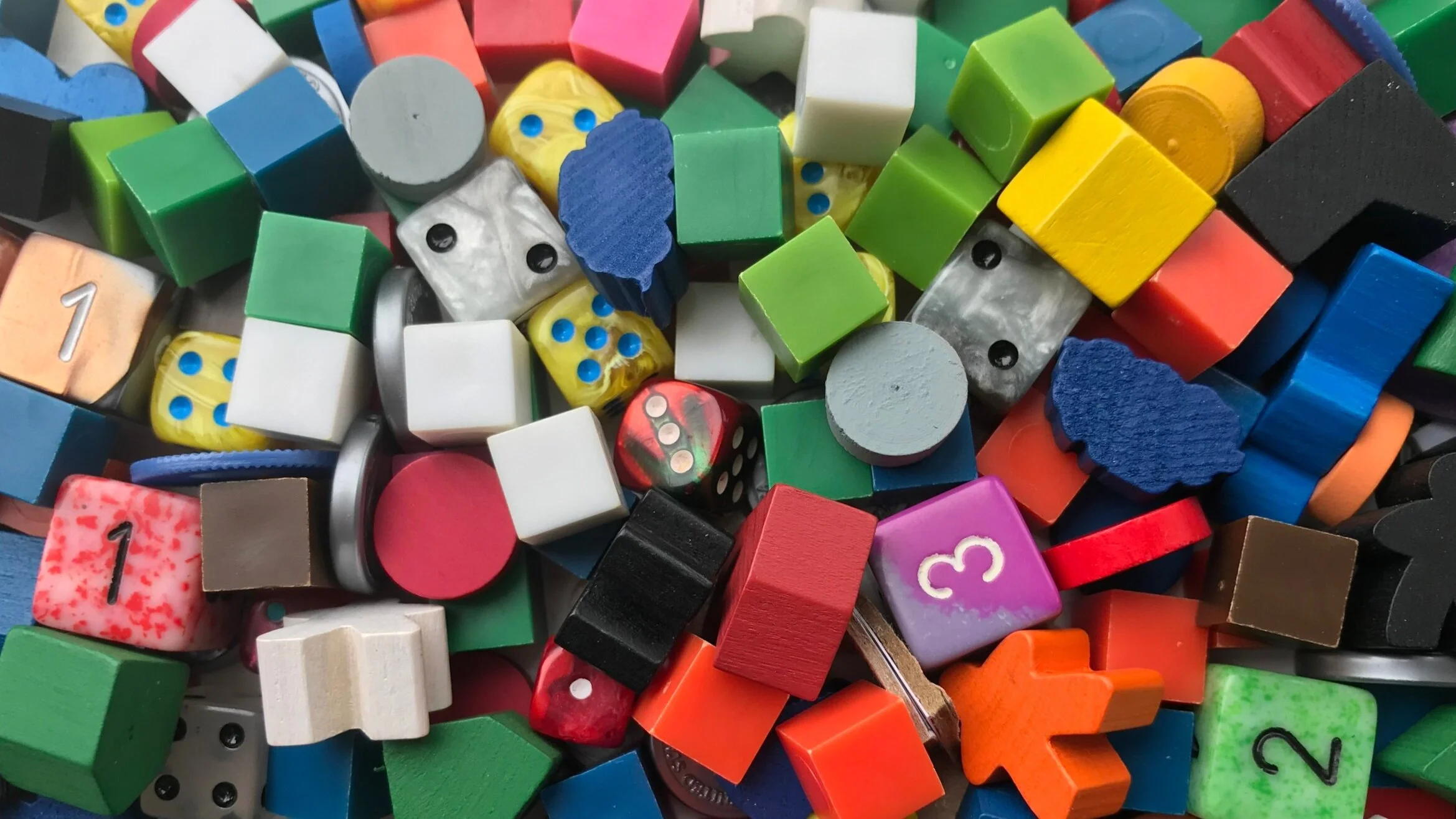By Doug Levandowski
In a past article on jealousy, I talked about perceived luck as a cause of jealousy. I didn’t really delve into the root cause of what we perceive as luck too deeply, so I wanted to do that here. I think what it comes down to is “hidden work”--things that people do that either fly beneath the radar or that hide in plain sight.
The best way, I think, to explain this is from a quote from one of my favorite plays, “Master Harold”…and the Boys, a scathing critique of Apartheid South Africa. One of the recurring motifs in the play is ballroom dance, and in an early scene, one character, Sam, tries to coach an obstinate Willie in the ways of ballroom dance. Willie does not take criticism well…
WILLIE: How can I enjoy myself? Not straight, too stiff and now it's also glide, give it more style, make it smooth . . . Haai! Is hard to remember all those things, Boet Sam.
SAM: That's your trouble. You're trying too hard.
WILLIE: I try hard because it is hard.
SAM: But don't let me see it. The secret is to make it look easy. Ballroom must look happy, Willie, not like hard work. It must . . . Ja! . . . it must look like romance.
WILLIE: Now another one! What's romance?
SAM: Love story with happy ending. A handsome man in tails, and in his arms, smiling at him, a beautiful lady in evening dress.
WILLIE: Fred Astaire, Ginger Rogers.
SAM: You got it. Tapdance or ballroom, it's the same. Romance. In two weeks' time when the judges look at you and Hilda, they must see a man and a woman who are dancing their way to a happy ending. What I saw was you holding her like you were frightened she was going to run away.
Sam goes on to explain that romance is the magical moment when something that takes great effort appears effortless. It’s a great play and literally everyone should read it. Or watch it. Or both.
But Sam’s concept of romance gets to the root of the reason that I think so many people think that luck plays such a big factor in getting published or making a great game--sometimes very quickly. It isn’t that great games burst out of their creator’s heads fully formed like Athena. The truth is that a lot of the work that happens in the gaming industry either happens behind the scenes or is romance--it doesn’t seem like work. It hides in plain sight.
What then should we know about “hidden work” that can help make us better designers?
We don’t see practice--but practice is vital.
When a jazz improviser picks up an instrument and starts playing, it seems like magic. Over the summer, I took a vacation with a friend of mine who’s a professional flutist, and he practiced scales for about an hour each day. Nobody’s really magical; people who are good just practice hard. Malcolm Gladwell argues that 10,000 hours of practice will make someone an expert, and even if that isn't necessarily true, practice still accounts for (according to that study) about a third of the variation in ability levels.
The same is true of game design. Every game you design is practice for the next one. When JR Honeycutt and I designed Unpub: The Unpublished Card Game in about a week, that was because it was about the 30th game we’d designed (combined total of stuff in some playable state…not published or as a design team…yet...). On the other hand, the first game I designed took me and the co-designer about a year and a half, and, on average, we worked on the game for about two hours each day.
The difference is obvious: practice. As I did BoardGameGeek’s 24-hour contests (the equivalent of a jazz solo, I’d say) once a month for a year, I got better as a designer. Nothing from those contests was a finished design, but each was a way to practice designing in a compressed, quick way. If you’re looking for ways to practice, then look no further than here. Or, check out Boardgamizer for a random set of mechanics, theme and victory conditions and just practice.
Most importantly, don’t be afraid to start things that don’t wind up going anywhere. A design that ultimately doesn’t work can still be a great exercise--and we can learn quite a lot from our failures.
“Good writers borrow. Great writers steal.”
Since I can’t find the original author of that quote after 20 seconds of Internet research, we’ll just say that one is unattributable--but that doesn’t make it not true. In English teaching, we call this writing from a model. Look at how Austen used free indirect discourse and try that out. Look at how Remarque used imagery and try that out. Borrow--or outright steal.
We can do the same thing in game design. You don’t even have to start from scratch. Take a game you like and change it in some meaningful way--or take one that you don’t like and make it good. One of my first design projects was trying to make a good two-player version of Catan using the original components. I wouldn’t publish it--both because it’s not my original game and because I couldn’t make it work. Still, it was a great exercise--and excellent practice for future designs. I learned a lot about what makes two-player games work--and what prevents them from working. In some ways, it was a way to prepare myself to design You’re Fired two years later--but by the time I got there, all that work was hidden. It seemed like the core elements of You’re Fired happened quickly while I was watching Netflix with my wife.
Your first one won’t be the best one--and it takes a lot of time to do things quickly.
It’s more or less established game design law that designers don’t think their first design is their best--even if it’s the one that they put the most work into. My theory, which was very true for me, is that because it’s their first, new designers don’t think they’ll ever have another idea. But you will. I promise.
In this respect, I think that going back to jazz is a particularly good way to shift our thinking as designers. No jazz musician does a single solo and goes, “Weeeelp, that’s it. I’ll never be able to do another one of those,” or even thinks that before they start it. They know this is the first of many. What makes it so tough to think about game design this way? I’d say nothing--just our own hangups.
So, especially if you’re starting out, give yourself permission to not get the first one quite right (but do listen to feedback from experienced designers to make it better). And, most importantly, give yourself permission to put in a lot of work that feels impossibly hard, knowing that your next one (and the one after that, and after that, and after that) will be better and easier--more like romance.
For example, during the designer dinner at Unpub 5, JR had an idea for a game based on someone mishearing names. Four hours later, he told me that he’d made a prototype and wanted me to play it, but I told him I was too tired. The next morning, he said, “Hey, that game I made yesterday? I sold that last night.”
Anyone who doesn’t know him might be tempted to say, “Man, that’s lucky. I guess they wanted any game and just signed something!” or “It’s lucky that the game turned out so well so quickly.” But that’s practicing for years. It takes a lot of work to make design look that effortless and to make it possible for him to design so, so quickly.
Start looking at playing games as work.
Playtesting counts as work on a design. Of course it does. But can you actually quantify how many hours you’ve spent on your current design? And when you’re sitting at a table with your friends, laughing, eating Doritos, throwing things at each other, and giving each other feedback, does that feel or look like work?
There’s the old saying that if you love what you do, you’ll never work a day in your life. That saying is dumb. It won’t feel like work, but you’ll be working your buns off. Csikszentmihalyi (good luck saying that one--I used him in my dissertation, and even I can’t get it right) studied motivation and found that when people are meaningfully challenged at a level commensurate with their skill, they enter a state that he calls “flow”--where they are intrinsically motivated to continue working on something. In this state, people will get absorbed in their work and will continue working long past when others would stop, without really realizing how hard they’re working.
As game designers, we’re both good at what we do (if I do say so myself) and exceptionally challenged by the task at hand, but it’s never outside of our ability. It’s just a matter of how quickly we’ll improve the game. Still, it always looks like romance because we’re laughing and throwing Doritos while we work.
It’s even the case that, indirectly, playing other games makes you a better designer. Of course, if I’m playtesting for someone and giving them feedback, we’re honing our skills as designers in obvious ways. In the same way that the students who read the most are the best writers, though, so too are the people who play a lot of games better designers. In short, you see more of what works, what doesn’t and what drives engagement with a game.
So, bottom line, just start designing. Don’t worry if it seems like a specific project won’t go anywhere. Co-design and work with someone you respect. Or design on your own. Or both. Just keep designing. But first, go read “Master Harold”...and the Boys because it’s so damn good.










































